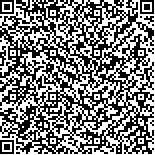王中莉,姚云海,宫本明,等.重复经颅磁刺激对脑卒中吞咽障碍患者吞咽功能及脑干听觉诱发电位的影响[J].中华物理医学与康复杂志,2020,42(5):407-412
扫码阅读全文

|
| 重复经颅磁刺激对脑卒中吞咽障碍患者吞咽功能及脑干听觉诱发电位的影响 |
|
| |
| DOI:10.3760/cma.j.issn.0254-1424.2020.05.006 |
| 中文关键词: 重复经颅磁刺激 脑卒中 吞咽障碍 脑干听觉诱发电位 |
| 英文关键词: Transcranial magnetic stimulation Stroke Dysphagia Brain-stem Auditory evoked potentials |
| 基金项目:国家自然科学基金项目(81703216);浙江省医药卫生科技计划平台计划项目(2019ZD020);浙江省自然科学基金青年基金项目(LQ19H170001);浙江省公益研究计划社会发展项目(LGF19H170004);嘉兴市科技计划项目(2017AY33036) |
|
| 摘要点击次数: 5861 |
| 全文下载次数: 7608 |
| 中文摘要: |
| 目的 观察重复经颅磁刺激(rTMS)对脑卒中吞咽障碍患者吞咽功能及脑干听觉诱发电位(BAEP)的影响。 方法 选取脑卒中恢复期吞咽障碍患者60例,按入院的先后顺序随机分为观察组和对照组,每组30例。2组患者均行常规吞咽功能训练(包括间接训练和直接摄食训练,每次治疗30 min,每日1次,每周6 d,6 d为1个疗程,共治疗5个疗程),观察组在此基础上给予rTMS治疗,刺激频率3.0 Hz,刺激强度80%静息态运动阈值(RMT),刺激时间2 s,间歇10 s,左右交替,每侧治疗10 min;对照组则在常规吞咽功能训练的基础上给予假rTMS治疗,操作方法及治疗时间和疗程与rTMS治疗相同,但仅将探头垂直于患者颅骨,不加任何刺激;2组刺激治疗时间均为20 min,每日1次,每周6 d,6 d为1个疗程,共治疗5个疗程。分别于治疗前及治疗5个疗程后(治疗后),采用吞咽功能性交流测试(FCM)评分及改良的曼恩吞咽能力评估量表(MMASA)对2组患者的吞咽功能进行评定,并评估2组患者治疗后的临床疗效。采用美国肌电图诱发电位仪进行BAEP检测,观察2组患者BAEP的各波潜伏期(PL)和波峰间潜伏期(IPL)变化。FCM评分采用中位数(上、下四分位数)[即M(P25,P75)]表示,其余资料以(x-±s)表示。 结果 治疗后,观察组和对照组的FCM分别为6.50(5.00,7.00)级和5.00(4.00,7.00)级,均明显优于组内治疗前[观察组为2.50(2.00,4.00)级,对照组为2.00(1.00,3.00)级],差异有统计学意义(P<0.05),且观察组治疗后的FCM明显优于对照组治疗后(P<0.05)。观察组和对照组的MMASA总分分别为(92.63±6.88)分和(81.60±7.98)分;治疗后,观察组除表达性言语障碍和构音障碍两项外其余各子项均高于对照组(P<0.05),观察组治疗后各子项亦均高于组内治疗前(P<0.05);治疗后,对照组的呼吸、构音障碍、舌肌运动范围、舌肌力量、咽反射及软腭运动方面亦均高于组内治疗前(P<0.05)。从BAEP变化看,治疗后观察组各波潜伏期Ⅰ波(1.51±0.16)ms、Ⅲ波(3.64±0.12)ms、Ⅴ波(5.30±0.16)ms及波峰间潜伏期Ⅰ-Ⅲ(2.01±0.16)ms、Ⅲ-Ⅴ(1.65±0.16)ms、Ⅰ-Ⅴ(4.05±0.14)ms与对照组各波潜伏期比较,差异均有统计学意义(P<0.05)。 结论 rTMS结合常规吞咽训练可以明显提高脑卒中患者吞咽功能,缩短BAEP的潜伏期,从而调节吞咽中枢功能。 |
| 英文摘要: |
| Objective To observe the effect of applying repetitive transcranial magnetic stimulation (rTMS) on swallowing function and auditory evoked potentials in the brain-stems of stroke survivors with dysphagia. Methods Sixty stroke survivors with dysphagia were randomly assigned to an observation group and a control group, each of 30. Both groups were given 30 minutes of routine swallowing training 6 times a week for 5 weeks, while the observation group was additionally provided with two-second bursts of rTMS on the left and right brain hemispheres alternately for 20 minutes daily. The frequency was 3.0Hz and the strength was 80% of the resting motor threshold (RMT), with an interval of 10 seconds between bursts. Before and after the treatment, both groups′ swallowing was assessed using the functional communication measure (FCM) and the modified Mann swallowing capacity evaluation scale (MMASA). Brainstem auditory evoked potentials (BAEP) were recorded to detect any changes in the peak latency (PL) and inter-peak latency (IPL). The clinical efficacy was also observed. Results After the treatment, the average FCM results of both groups had improved significantly, but the observation group had improved significantly more. The average MMASA total scores and the average scores on all the sub-items had improved significantly more in the observation group except for the expressive speech disorder and anarthria scores. After the treatment, improvement was observed in respiration, anarthria, range of motion of the tongue muscles, strength of the tongue muscles, gag reflex and soft palate movement compared with before the intervention. Peak and inter-peak latencies had also improved significantly more in the observation than in the control group, on average. Conclusions rTMS combined with conventional swallowing training can significantly improve the swallowing of dysphagic stroke survivors, and shorten the PL of the BAEP so as to better regulate deglutition. |
|
查看全文
查看/发表评论 下载PDF阅读器 |
| 关闭 |